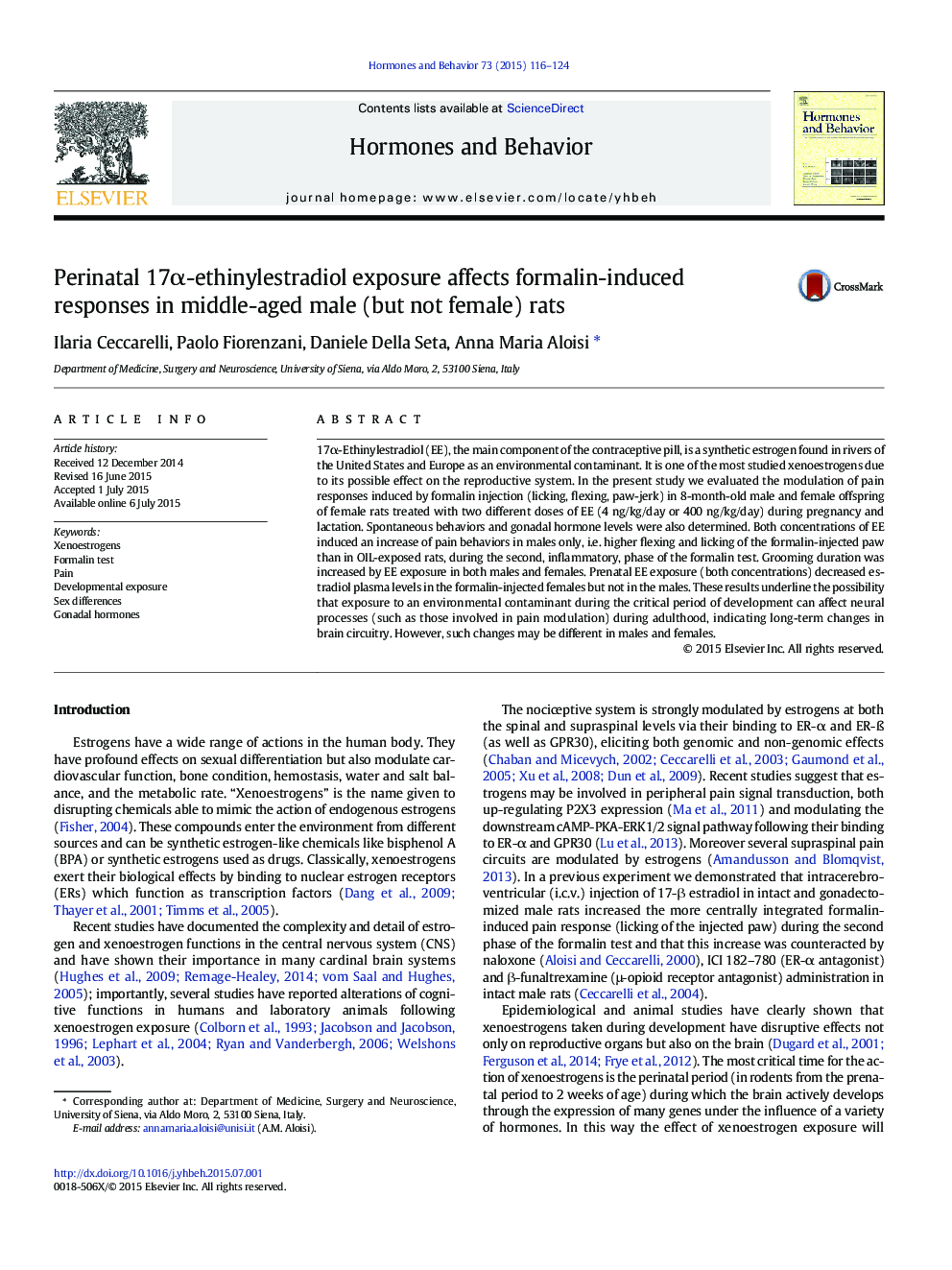| Article ID | Journal | Published Year | Pages | File Type |
|---|---|---|---|---|
| 6794844 | Hormones and Behavior | 2015 | 9 Pages |
Abstract
17α-Ethinylestradiol (EE), the main component of the contraceptive pill, is a synthetic estrogen found in rivers of the United States and Europe as an environmental contaminant. It is one of the most studied xenoestrogens due to its possible effect on the reproductive system. In the present study we evaluated the modulation of pain responses induced by formalin injection (licking, flexing, paw-jerk) in 8-month-old male and female offspring of female rats treated with two different doses of EE (4 ng/kg/day or 400 ng/kg/day) during pregnancy and lactation. Spontaneous behaviors and gonadal hormone levels were also determined. Both concentrations of EE induced an increase of pain behaviors in males only, i.e. higher flexing and licking of the formalin-injected paw than in OIL-exposed rats, during the second, inflammatory, phase of the formalin test. Grooming duration was increased by EE exposure in both males and females. Prenatal EE exposure (both concentrations) decreased estradiol plasma levels in the formalin-injected females but not in the males. These results underline the possibility that exposure to an environmental contaminant during the critical period of development can affect neural processes (such as those involved in pain modulation) during adulthood, indicating long-term changes in brain circuitry. However, such changes may be different in males and females.
Related Topics
Life Sciences
Biochemistry, Genetics and Molecular Biology
Endocrinology
Authors
Ilaria Ceccarelli, Paolo Fiorenzani, Daniele Della Seta, Anna Maria Aloisi,
